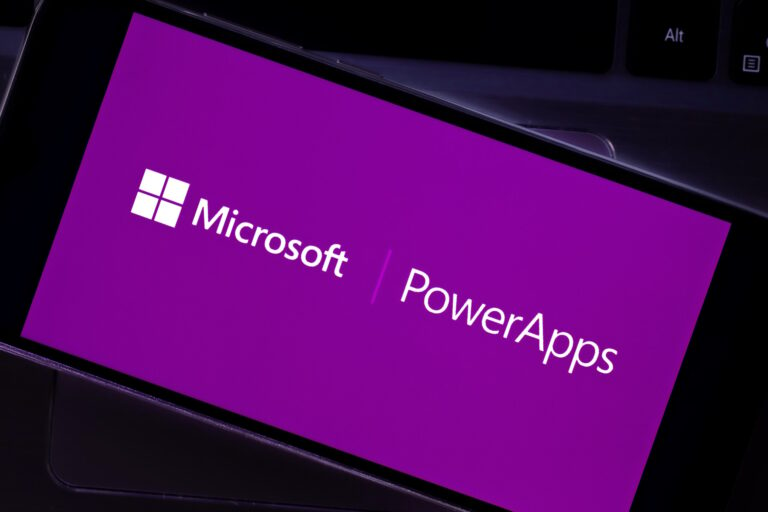In recent years, Microsoft Power Platform has emerged as one of the most effective platforms for streamlining business operations. Enterprises are now integrating Microsoft Power Platform to achieve cost-effective solutions. This platform has significantly reduced the need for extensive coding, enabling businesses to handle most of the work themselves. However, businesses need to understand how to integrate Power Platform into their operations to achieve more with less input. In this blog, you will learn the 10 best ways to integrate Power Platform into business operations.
Why Businesses Need to Embrace Digital Transformation
Over the last few years, companies have realized they can’t afford to keep relying on slow manual processes or legacy systems. Digital transformation is no longer a buzzword; it’s essential for survival. When a business chooses the right mix of automation, smart insights, and efficiency, it creates an environment where employees feel empowered and decisions happen faster.
Adopting solutions like Microsoft Power Platform business tools brings more than technology. It brings a shift in mindset. It’s about freeing up time from repetitive work so teams can focus on impact, building resilience in operations, and gaining a competitive edge in today’s constantly changing markets.
The Role of Power Platform in Bridging IT and Business Teams
Learn About Our Managed IT, Microsoft 365, and Consulting Services
For most organizations, the biggest hurdle isn’t technology, it’s alignment. Business units want agility, while IT wants security and governance. Both are valid, but they often clash. The Power Platform integration helps bridge this gap. It gives business teams the ability to create apps, workflows, and dashboards on their own using low-code tools, while giving IT professionals confidence that everything is compliant and scalable. By integrating with familiar tools like Microsoft 365 Power Apps and Teams, the platform creates a space where business and IT are no longer at odds. They become co-creators of value.
Benefits of Power Platform Integration
- Faster innovation with low-code/no-code development
- Cross-department collaboration on shared tools and dashboards
- Stronger decisions with real-time analytics and KPIs
- Enterprise scalability without heavy infrastructure changes
The collective impact is clear: agility, reduced costs, and future-ready operations. When companies adopt Microsoft Power Platform business solutions, they don’t just get apps and automation. They get alignment of strategy, efficiency, and culture.
10 Ways to Integrate Power Platform into Business Operations
1. Automating Routine Tasks with Power Automate
For instance, automating leave request approvals or invoice processing not only speeds up operations but also reduces human errors. This form of Power Platform integration allows teams to shift focus toward strategic priorities rather than manual tasks.
2. Building Custom Apps with Power Apps
Many organizations still use outdated spreadsheets or paperwork for tracking daily tasks. With Microsoft 365 Power Apps, businesses can rapidly build tailored apps like expense management or field service tracking that fit their exact needs without custom coding. These apps modernize manual processes, reduce delays, and improve accuracy. One of the most effective examples of how to use Power Platform in business is empowering employees with tools that adapt directly to their workflows.
3. Enhancing Customer Support with Power Virtual Agents
Customer experience is a major growth driver, and businesses cannot afford to keep customers waiting. Power Virtual Agents lets companies deploy AI-powered chatbots that provide instant, 24/7 self-service support. These bots can answer FAQs, escalate complex issues, or even create support tickets seamlessly integrated into existing CRM systems. This not only reduces the burden on human agents but also boosts customer satisfaction.
Automating repetitive tasks is one of the fastest ways to save time and improve efficiency. Using Power Automate, businesses can design workflows that handle approvals, email notifications, and data entry in the background.
4. Improving Data-Driven Decisions with Power BI
Leaders need to see the bigger picture in real-time. Power BI centralizes business intelligence by pulling data from different systems into a single dashboard. Whether it’s analyzing sales KPIs or identifying supply chain bottlenecks, managers can make data-driven decisions faster. This is where Microsoft Power Platform business insights shine, turning reactive responses into proactive strategies that strengthen competitiveness.
5. Integrating Power Platform with Microsoft 365 and Teams
Most organizations already rely on Microsoft 365 for collaboration. By integrating the Power Platform with Microsoft 365 Power Apps and Teams, employees can create and access workflows directly from familiar tools. For example, a chat in Teams can automatically trigger task creation, eliminating follow-ups and streamlining operations.
6. Streamlining HR Processes
HR departments often spend hours handling onboarding, recruitment scheduling, and training programs. Power Platform enables the automation of these processes, building custom HR portals that allow employees to self-serve information. This makes HR more efficient, reduces paperwork, and ensures compliance with company rules. For organizations scaling workforce operations rapidly, Power Platform integration significantly reduces the administrative burden.
7. Driving Sales and Marketing Efficiency
Marketing and sales teams need continuous visibility into their pipeline. By combining Dynamics 365 CRM with Power BI dashboards, businesses can track leads, automate reporting, and quickly identify conversion opportunities. This integrated approach enhances communication across sales and marketing, ultimately boosting revenue outcomes. Businesses exploring how to use Power Platform in business consistently benefit from this automation-driven growth.
8. Enhancing Compliance and Risk Management
Regulatory compliance is no longer optional. Businesses can leverage Power Platform to automate compliance workflows and monitor risks through customized dashboards. By creating automated alerts or audit-ready reports, risk teams gain better control over compliance procedures. This ensures organizations remain agile and secure while meeting evolving legal standards.
9. Optimising Supply Chain Operations
Supply chains thrive on precise data and timing. Power Platform integrated with ERP systems enables organizations to track inventory levels, logistics performance, and vendor reliability in real-time. Using Power BI dashboards, businesses can quickly respond to stock shortages, shipment delays, or inefficiencies. This prevents costly disruptions and drives long-term operational resilience.
10. Empowering Citizen Developers Across the Organization
With the rise of citizen developers, non-technical employees can now build apps, workflows, and automations independently. This democratization of development removes bottlenecks and fosters innovation across every department. Supported by IT frameworks, these departmental apps bring agility to business operations without overwhelming IT teams. By embracing Power Platform integration, companies empower employees at all levels to become key contributors to digital transformation.
Best Practice for Successful Integration
Adopting Microsoft Power Platform business solutions requires more than just technology. Companies should begin with small pilot projects to showcase fast wins before scaling across departments.
Governance and security frameworks must be in place to ensure compliance and data protection. Equally important is employee enablement—providing training and fostering a culture of innovation where citizen developers feel empowered to create. Partnering with specialists like TrnDigital, known among the top IT consulting firms in the USA, ensures businesses get expert guidance, proper architecture, and industry-best practices for scaling Power Platform adoption successfully.
Final Thoughts
The Power Platform integration is more than a tool. It is a catalyst for complete digital transformation across industries. From automating daily workflows to delivering powerful insights, Microsoft Power Platform enables businesses to achieve efficiency, agility, and scalability.
By leveraging real-time data and low-code solutions, companies can strengthen collaboration, make smarter decisions, and improve customer experiences. It’s time to explore how to use Power Platform in business for your unique challenges and opportunities.
Now is the right time to explore what it could mean for your workplace. Partner with TrnDigital and step into a smarter, more connected way of working with the Microsoft Power Platform.




